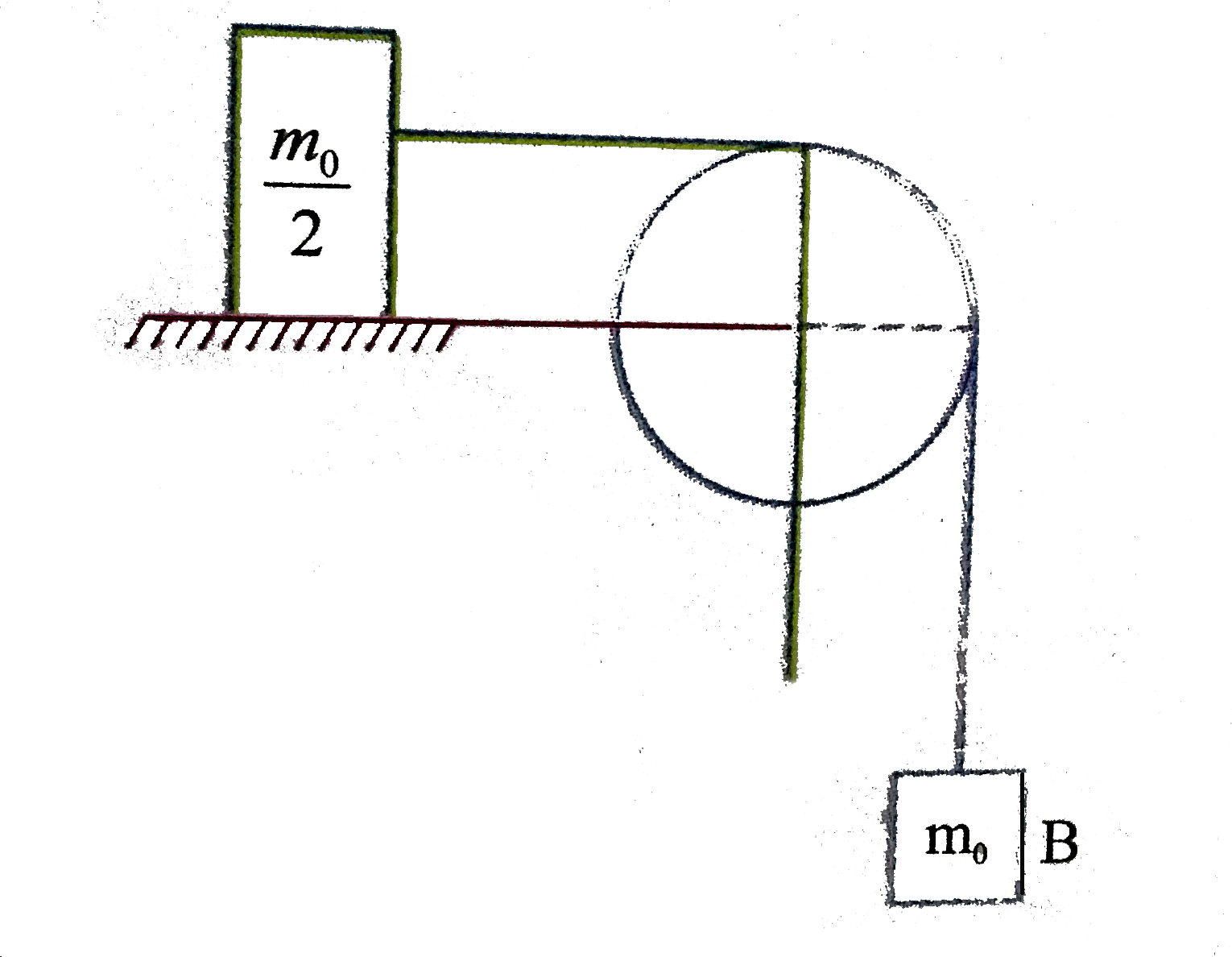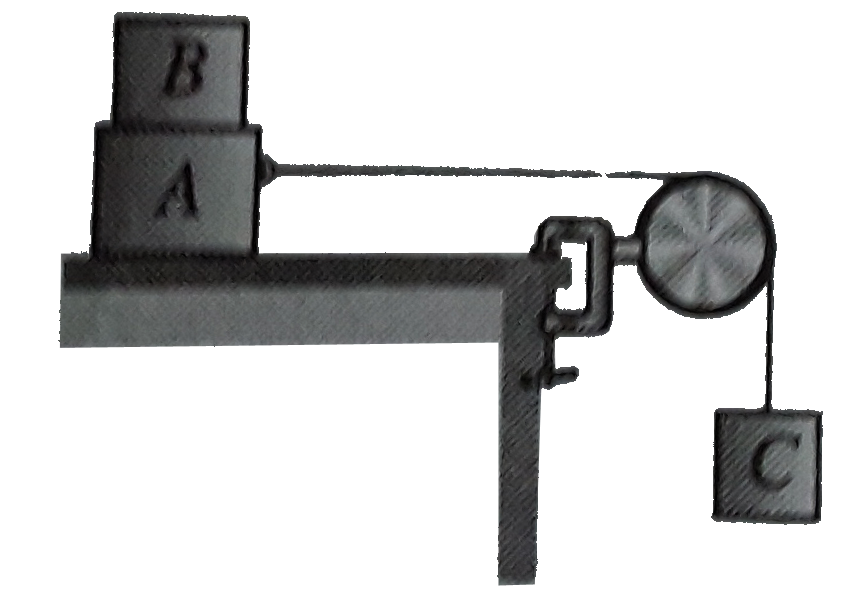Coefficient of friction between pulley and light string is μ1. Calculate minimum coefficient of friction between block A and ground such that system can be in equibrium.

μ=2
μ=2e−μπ2
μ=eμ1π2
μ=32
The correct Answer is:B

dT=μ1Tdθmo∫μm0g2dTT=μ1π2∫02dθ=μ1π2
[lnT]m0gμm0g2=μ1π2 ln2μ=μ1π2
μ2=eμ1π2μ=2eμ1π2
Topper's Solved these Questions
- FRICTIONBook:NARAYNAChapter:FRICTIONExercise:Multiple answer question
Explore 20 Videos
- FRICTIONBook:NARAYNAChapter:FRICTIONExercise:Passage type of questions
Explore 6 Videos
- COLLISIONBook:NARAYNAChapter:COLLISIONExercise:Level-II (H.W)
Explore 54 Videos
- GRAVITATIONBook:NARAYNAChapter:GRAVITATIONExercise:EXERCISE -IV
Explore 40 Videos
Similar Questions
Knowledge Check
Two blocks A and B are lying on the table as shown in the figure. The coefficient of friciton between block A and block B is μ. The coefficient of friction between block B and ground also μ. An external force F is applied in the direction shown. The maximum value of the force F that can be applied without moving the blocks.
 Aμ(2mA+mB)gBμ(mA+mB)gCμ(2mA+mB/2)gDμ(3mA+mB)g
Aμ(2mA+mB)gBμ(mA+mB)gCμ(2mA+mB/2)gDμ(3mA+mB)gCalculate angle of friction between wedge and block system is at rest M coefficient of friction between wedge and block.
 Atan−1μB2θCθDθ2
Atan−1μB2θCθDθ2A block of mass m2 is placed on a horizontal table and another block of mass m1 is placed on top is it. An increasing horizontal force F=αt is exerted on the upper block but the lowwer block never moves as a result. If the coefficient of friction between the blocks is μ1 coefficient of friction between the blocks is μ1 and that between the lower block and the table is μ2, then what is the maximum possible value of μ1/μ2 ?
Am2m1B1+m2m1Cm1m2D1+m1m2
Block B of mass mB=0.5kg rests on block A, with mass mA=1.5kg which in turn is on a horizontal tabletop (as shown in figure) .The coefficient of kinetic friction between block A and the tabletop is μk=0.4 and the coefficient of static friction between block A and blockB is μs=0.6 A light string attached block A passes over a frictionless, massless pulley and block C is suspended from the other end of the string. What is the largest mass mc (in kg) that block C can have so that block A and B still slide together when the system is replaced from rest?

View SolutionA spherical ball is placed between a vertical wall and a movable inclined plane as shown. There is no friction between the wall and the ball, and no friction between the ball and the inclined plane. The coefficient of friction between the inclined plane and the ground is The system is in equilibrium.

The minimum value of μ is :
View SolutionBlock B lying on a table weighs w. The coefficient of static friction between the block and the table is mu. Assume that the cord between B and the knot is horizontal. The maximum weight of the block A for which the system will be stationary is

View SolutionThese questions consists of two statements each printed as Assertion and Reason. While answering these question you are required to choose any one of the following four responses
Assertion In the system of two blocks of equla masses as shown, the coefficient of friction between the blocks (μ2) is less than coefficient of friction (μ1) between lower block and ground.

For all values of force F applied on upper block, lower block remains at rest.
Reason Frictional force on lower block due to upper block is not sufficient to overcome the frictional force on lower block due to ground.
View SolutionIn the arrangement shown in figure the cylinder of mass M is at rest on an incline. The string between the cylinder and the pulley (P) is horizontal. Find the minimum coefficient of friction between the incline and the cylinder which can keep the system in equilibrium. Also find the mass of the block. Assume no friction between the pulley (P) and the string.

View Solution

